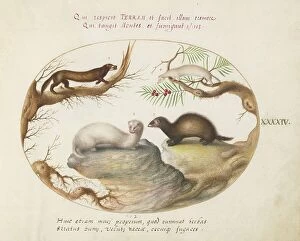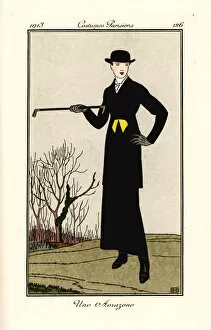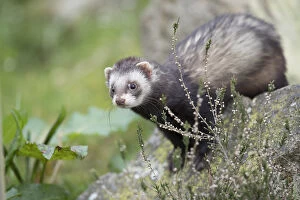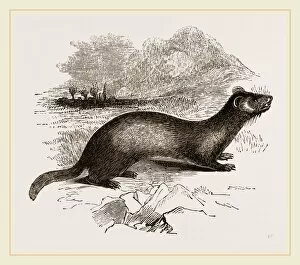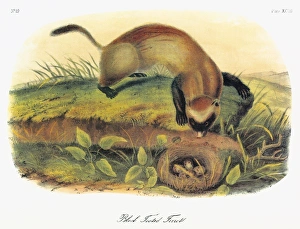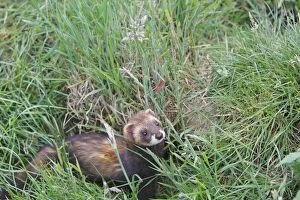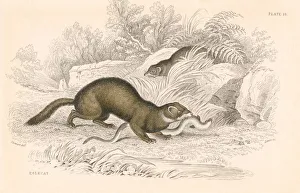Polecat Collection
The polecat, also known as the European polecat or Mustela putorius, is a fascinating creature that often gets mistaken for its close relatives such as the weasel, stoat
All Professionally Made to Order for Quick Shipping
The polecat, also known as the European polecat or Mustela putorius, is a fascinating creature that often gets mistaken for its close relatives such as the weasel, stoat, ermine, ferret, marten, and sable. Picture No. 11993249 captures a young polecat playfully exploring a flowerpot with curiosity and charm. In historical references like Page 326 of "The Foumart" from 1810-17, we can see watercolor illustrations accompanied by manuscript text depicting this elusive animal. Its fur has been highly valued throughout history; an evening outfit in 1913 featured a cape made of luxurious ermine and polecat fur. A woman wearing a tailored suit with a riding crop and bowler hat exudes sophistication while embracing the warmth provided by her polecat fur cape with a fox fur collar. Not only prized for its beauty but also admired for its adaptability in various environments, the polecat has managed to capture attention across different contexts. In another image from Thorburns Mammals published by Longmans and Co. , we witness the striking appearance of this creature amidst other members of its family - stoat, ermine skunk, mink or minx. Despite being misunderstood at times due to similarities with other species within its family tree, there are distinct characteristics that set the polecat apart. With sleek features and captivating eyes highlighted in coloured photographs like Mustela putorius (coloured photo), it stands out among others. Whether it's seen roaming freely in nature or adorning fashionable outfits alongside humans throughout history – like one woman dressed elegantly in ruffled dress featuring ermine accents – the presence of the polecat remains undeniable. Its unique qualities continue to captivate our imagination and remind us of nature's diversity. So next time you come across an image or encounter this enchanting creature yourself remember.




